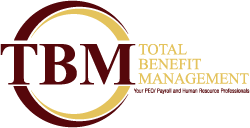- Total Benefit Management

Earned Sick Leave Law
April 25, 2019
4 Key Ways to Create a Culture of Learning
April 30, 2019This article comes from Bond, Schoeneck, and King Attorneys.
New York Amends Law Regarding Employee Paid Time Off to Vote
In the early morning hours of April 1, 2019, New York State passed its new yearly budget. Though the budget included several items of importance and interest, it was an under-the-radar provision revising paid voting time for employees that caught our attention.
Previously, the law provided that if an employee had four consecutive hours either between the opening of the polls and the start of his or her shift, or between the end of his or her shift and the closing of the polls, the employee would be deemed to have had sufficient time to vote and was not entitled to paid time off to vote. If the employee did not have this four-hour window of time, the employee was permitted to take up to two hours of paid time off to vote either at the beginning or end of his or her shift.
The new law, which is effective immediately, makes several important changes. First, the amount of paid time off that must be granted for voting leave changes from “up to two hours” to “up to three hours.” Furthermore, under the previous law, employees used to have a limited period of time between two and ten days before the election to notify their employer of their need for paid time off to vote. The new law eliminates this outside limit of ten days and just requires employees to request the paid time off to vote not less than two working days before the date of the election. Finally, and perhaps most significantly, the new law eliminates the presumption that an employee is not entitled to paid time off to vote if he or she has four consecutive hours outside of work time to vote.
By eliminating the four-hour consecutive window, the law virtually guarantees that all employees who request time off for voting must be granted sufficient paid time off to enable them to vote, up to a maximum of three hours. The effect that this could have on some employers, especially those who previously did not grant paid leave for elections because they could ensure that all employees had four consecutive hours off in which to vote, may be profound.
School districts may find the new law particularly problematic. Under the previous law, school district employees, such as teachers and bus drivers, almost always had four consecutive hours off between the end of their work day and the closing of the election polls, which usually occurs at 9:00 p.m. This meant that these types of employees were not eligible to take paid leave to vote. These previously ineligible employees arguably must now be granted up to three hours of paid time off for voting.
Employers may still have a basis for denying paid voting leave (or granting something less than the maximum of three hours of voting leave) on the ground that the statute only allows employees to “take off so much working time as will enable him or her to vote.” However, it is not clear whether employers can ask for verification that employees actually voted and how long it took them to vote. Furthermore, the statute used to allow employees to “take off so much working time as will, when added to his voting time outside of working hours, enable him to vote.” The amendment to the law eliminated the bolded and italicized phrase, which suggests that the amount of time an employee has to vote outside of working hours can no longer be considered in determining how much paid time off an employee is entitled to take to vote.
Click here to continue reading this article.

